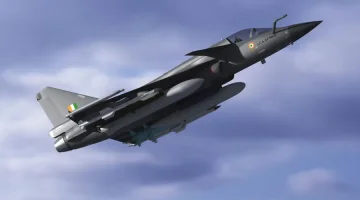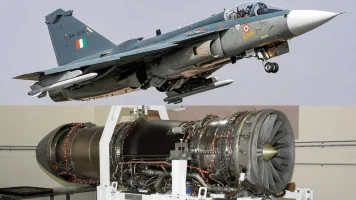- Views: 3K
- Replies: 18
A retired Indian Air Force (IAF) officer, Air Marshal Rakesh Vaidya, has voiced concerns over Hindustan Aeronautics Limited's (HAL) ability to meet production targets and delivery commitments for critical aircraft programs.
He warns that continued delays, particularly in the Tejas light combat aircraft program, could jeopardize HAL's position as India's primary aircraft manufacturer and open the door for greater private sector involvement in fighter jet production.
Vaidya's critique comes at a crucial time for HAL, which is facing scrutiny over its delivery schedules for projects like the Tejas Mk1A. With the IAF planning to procure 97 more of these advanced light combat aircraft, HAL is under pressure to ramp up production and ensure timely delivery.
Vaidya cautions that any failure to do so could erode confidence in HAL's capabilities, potentially leading to a greater role for private companies in fighter jet manufacturing.
The transport aircraft sector in India has already seen a shift towards private sector participation, with companies like Tata Advanced Systems Limited (TASL) taking on significant roles. Similarly, HAL is increasingly collaborating with private sector partners for projects like the Indian Multi-Role Helicopter (IMRH).
While acknowledging the potential benefits of such partnerships, Vaidya emphasizes the need for HAL to solidify its position as the sole entity capable of manufacturing fighter jets in India, given the strategic importance of self-reliance in defence.
Former IAF Chief, Air Chief Marshal VR Chaudhari, has openly advocated for private sector involvement in the production of the Tejas MkII. However, this suggestion has faced resistance from the Ministry of Defence (MoD) due to concerns about underutilization of HAL's facilities.
The MoD's stance is to ensure that HAL remains fully engaged, especially as the production of the Tejas Mk1A nears completion and the transition to the Tejas MkII is expected around 2028-29.
This situation presents both a challenge and an opportunity for HAL. The company must demonstrate efficiency and reliability in its production lines while also adapting to the changing landscape of defence manufacturing.
Collaboration with private entities in certain areas, like the IMRH, could serve as a testing ground for broader partnerships in the future, potentially even in fighter jet production if HAL fails to meet expectations.
For HAL, the challenge is not just about increasing production numbers but also about maintaining quality, integrating new technologies, and potentially restructuring its operations to become more agile and competitive. Its ability to adapt and deliver on its commitments will be crucial in maintaining its central role in India's defence manufacturing ecosystem.


